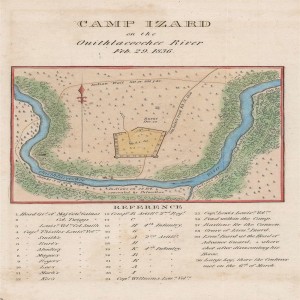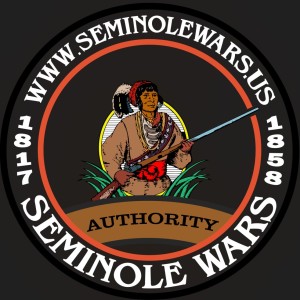
- Podcast Features
-
Monetization
-
Ads Marketplace
Join Ads Marketplace to earn through podcast sponsorships.
-
PodAds
Manage your ads with dynamic ad insertion capability.
-
Apple Podcasts Subscriptions Integration
Monetize with Apple Podcasts Subscriptions via Podbean.
-
Live Streaming
Earn rewards and recurring income from Fan Club membership.
-
Ads Marketplace
- Podbean App
-
Help and Support
-
Help Center
Get the answers and support you need.
-
Podbean Academy
Resources and guides to launch, grow, and monetize podcast.
-
Podbean Blog
Stay updated with the latest podcasting tips and trends.
-
What’s New
Check out our newest and recently released features!
-
Podcasting Smarter
Podcast interviews, best practices, and helpful tips.
-
Help Center
-
Popular Topics
-
How to Start a Podcast
The step-by-step guide to start your own podcast.
-
How to Start a Live Podcast
Create the best live podcast and engage your audience.
-
How to Monetize a Podcast
Tips on making the decision to monetize your podcast.
-
How to Promote Your Podcast
The best ways to get more eyes and ears on your podcast.
-
Podcast Advertising 101
Everything you need to know about podcast advertising.
-
Mobile Podcast Recording Guide
The ultimate guide to recording a podcast on your phone.
-
How to Use Group Recording
Steps to set up and use group recording in the Podbean app.
-
How to Start a Podcast
-
Podcasting
- Podcast Features
-
Monetization
-
Ads Marketplace
Join Ads Marketplace to earn through podcast sponsorships.
-
PodAds
Manage your ads with dynamic ad insertion capability.
-
Apple Podcasts Subscriptions Integration
Monetize with Apple Podcasts Subscriptions via Podbean.
-
Live Streaming
Earn rewards and recurring income from Fan Club membership.
-
Ads Marketplace
- Podbean App
- Advertisers
- Enterprise
- Pricing
-
Resources
-
Help and Support
-
Help Center
Get the answers and support you need.
-
Podbean Academy
Resources and guides to launch, grow, and monetize podcast.
-
Podbean Blog
Stay updated with the latest podcasting tips and trends.
-
What’s New
Check out our newest and recently released features!
-
Podcasting Smarter
Podcast interviews, best practices, and helpful tips.
-
Help Center
-
Popular Topics
-
How to Start a Podcast
The step-by-step guide to start your own podcast.
-
How to Start a Live Podcast
Create the best live podcast and engage your audience.
-
How to Monetize a Podcast
Tips on making the decision to monetize your podcast.
-
How to Promote Your Podcast
The best ways to get more eyes and ears on your podcast.
-
Podcast Advertising 101
Everything you need to know about podcast advertising.
-
Mobile Podcast Recording Guide
The ultimate guide to recording a podcast on your phone.
-
How to Use Group Recording
Steps to set up and use group recording in the Podbean app.
-
How to Start a Podcast
-
Help and Support
- Discover

SW047 Digging into the Tantalizing What Ifs Surrounding the 1836 Peace Parley at Camp Izard
The Battle of Camp Izard, Second Day by Jackson Walker
In March,1836, the commanding general of a large US Army force had foolishly boxed himself into a hastily built fortification, a 250-yard quadrangle fortified with log breastworks and earthen bastions. He called it Camp Izard, after a West Point-trained officer who had perished on the first day of what became known to history as the aptly named Battle of Camp Izard. The Camp was located along the Withlacoochee River about 20 miles southwest of today’s Ocala, Florida.
The expedition’s leader was General Edmund P. Gaines, commander of the US Army’s Western Military Department, based in New Orleans. Upon learning of the Seminole’s annihilation of Major Francis Dade’s column in late December 1835 and their rebuff of General Duncan’s Clinch’s advance against them in early January 1836, Gaines quickly amassed a military force and rushed off to Florida to join the fight. Gaines found the Dade site, buried the fallen with military honors, and set out to avenge Dade’s men and the Army’s honor. Resupplying at Fort Drane, Gaines believed he could quickly find the Seminole, whip them into submission with his combined force of regulars and militia, and evict them to the Oklahoma territory.
Color map of Camp Izard in February 1836 and black and white photograph of Maj. Gen. Edmund P. Gaines (late in his life)
Instead, he found himself besieged and beleaguered facing a force of Seminole he could not perceive at a small camp he could not escape into terrain he did not know his way out of. As his supplies dwindled, his men began killing and eating their horses and mules to survive. Anxious with the precariousness of his position, Gaines sent messengers begging for relief from the commander of US Army forces in Florida, the aforementioned General Clinch, but thus far no relief had received no reply.
Therefore, he speedily agreed to parley when he received such a Seminole request. They told him they were willing to let his starving Army retreat unmolested if he agreed to leave them alone in Florida. He was close to agreeing to this condition when men from General Clinch’s late arriving relief party stumbled onto the camp and, unaware of the negotiations, began firing. The Seminoles withdrew. The war would drag on for another seven years. We who look back at the poor timing can only despair and ask, What If?
In this episode, Sean Norman, acting executive director for the Gulf Archaeological Research Institute, returns to the Seminole Wars podcast to help us address this great “What if” question. He will explore how the specialized study of Conflict Archaeology informs his study of this Seminole War site, and, how an acronym called KOCOA can aid archaeological teams in complementing and in some cases verifying written accounts of military engagements, such as this one. And, as Camp Izard is the first site GARI began surveying from the Seminole Wars, Sean will address GARI’s challenges in locating and excavating at the camp’s remains, and he will examine why camps and forts in Florida were so short-lived and left such an ephemeral signature on the landscape.
Host Patrick Swan is a board member with the Seminole Wars Foundation. He is a combat veteran and of the U.S. Army, serving in Iraq, Afghanistan, Kuwait, and Kosovo, and at the Pentagon after 9/11. A military historian, he holds masters degrees in Public History, Communication, and Homeland Security, and is a graduate of the US Army War College with an advanced degree in strategic studies. This podcast is recorded at the homestead of the Seminole Wars Foundation in Bushnell, Florida.
Like us on Facebook, LinkedIn, and YouTube. Get the latest episode without delay where and when you want it by subscribing through your favorite podcast catcher, such as iHeart, Stitcher, Spotify, DoubleTwist, Pandora, Podbean, Google podcasts, iTunes or directly from the Seminole Wars Foundation website www.seminolewars.us
More Episodes
Create your
podcast in
minutes
- Full-featured podcast site
- Unlimited storage and bandwidth
- Comprehensive podcast stats
- Distribute to Apple Podcasts, Spotify, and more
- Make money with your podcast
It is Free
- Privacy Policy
- Cookie Policy
- Terms of Use
- Consent Preferences
- Copyright © 2015-2026 Podbean.com






